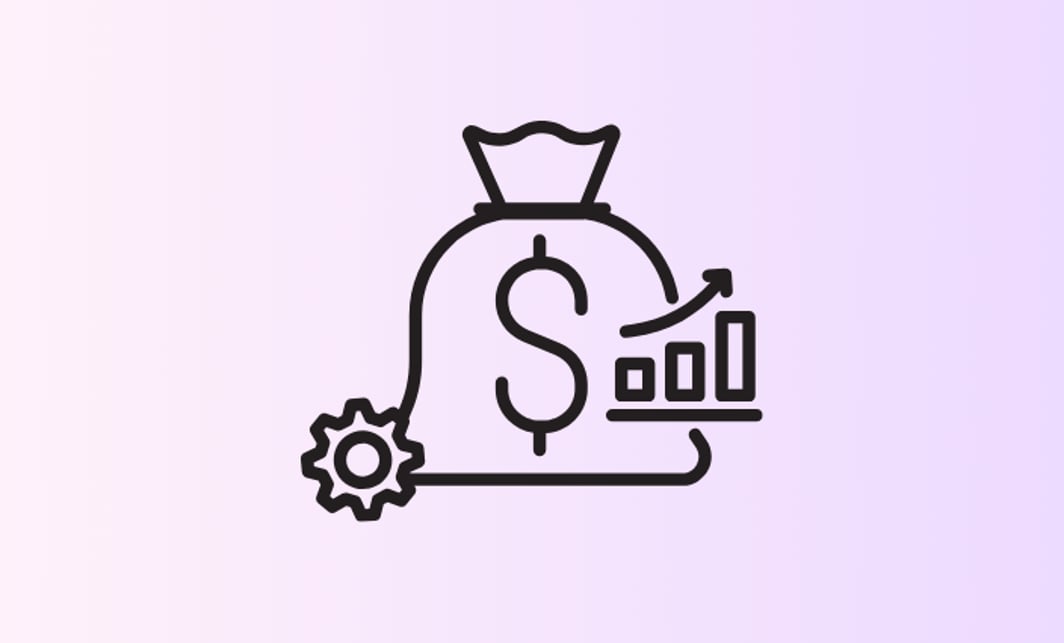Borrowing Capacity Calculator -
Find out how a borrowing capacity calculator can help you assess your home loan options and make informed financial decisions in Australia.
Tell us about your financial situation
Loan Details
Take the next step
You've used the home loan borrow calculator – what now?
Understanding your borrowing capacity is essential when planning to buy a home or invest in property. A borrowing capacity calculator can help you determine how much money a lender might be willing to lend you based on your income, expenses, and other financial factors. This tool is incredibly useful for those looking to navigate the property market in Australia effectively.
Key Takeaways
- Understanding your borrowing capacity is essential for making smart financial choices when buying a home.
- A borrowing capacity calculator helps you estimate how much you can borrow based on your income and expenses.
- Always include all your financial details in the calculator to get the right estimate for your loan.
- With Bheja.ai, navigate home loans easily using AI-driven insights. You can compare over 100 brands, get proactive alerts, and make better financial decisions effortlessly.
- Avoiding common mistakes like miscalculating expenses or credit scores can lead to more accurate results when determining borrowing limits.
What is a Borrowing Capacity Calculator?
A borrowing capacity calculator is a tool that helps potential home buyers and investors determine how much they can borrow for a property. In Australia, understanding borrowing capacity is crucial, especially as property prices fluctuate and finance conditions change. Knowing your borrowing limit not only guides your property search but also assists in budgeting.
Why is it Essential for Home Buyers and Investors?
Understanding your borrowing capacity is fundamental for several reasons:
- Financial Planning: It helps you set realistic budgets for your property purchase without overextending financially.
- Market Knowledge: Awareness of how much you can borrow provides a clear framework when navigating the competitive Australian property market.
- Better Decision-Making: By calculating your potential borrowing limit, you can make informed choices regarding different properties and financial products.
How Borrowing Capacity Calculators Work?
Your borrowing capacity depends on more than just your income. Lenders in Australia look at several financial factors to work out how much you can borrow. They want to ensure that you can repay the loan and that their risk is effectively managed.
Understanding these factors puts you in control. Whether you're a first-home buyer wondering how much house you can afford, or an investor looking to maximise your purchasing power, knowing what lenders prioritize helps you optimize your application and potentially increase your borrowing capacity by tens of thousands of dollars.
If you understand what lenders look for, you could be approved for a $650,000 loan instead of just $500,000. That means you could have $150,000 more to spend.
Most Australians focus solely on their salary when estimating borrowing capacity, but lenders actually weigh six critical factors equally. Some of these factors can be improved quickly with the right strategy, while others require longer-term planning.
Here are the six key elements that determine exactly how much you can borrow:
1
Your income ( and your Applicant's)
The foundation of your borrowing capacity
What it is
Your gross (pre-tax) income from all stable sources. This includes salary/wages, regular commissions/bonuses (lenders may scale these back), self-employed income (often requiring 2+ years of records), and sometimes rental income.
How it matters
Higher, stable income generally means you can service a larger loan, increasing your borrowing capacity. Lenders look for consistency and reliability.
Example
Someone earning a stable $90,000 p.a. will generally have a higher borrowing capacity than someone earning $70,000 p.a., assuming all other factors are equal. If applying jointly, combined incomes significantly boost potential borrowing.
2
Your Living Expenses
Every dollar counts toward your borrowing power
What it is
Regular monthly spending on essentials and lifestyle. Lenders compare declared expenses against benchmarks like HEM and use the higher figure.
How it matters
Lower expenses mean more disposable income available for loan repayments, positively impacting your borrowing power.
Example
A household with managed monthly expenses of $2,500 might qualify for a larger loan than one with $3,500 per month expenses.
3
Your Existing Debts and Liabilities
Current commitments that reduce available income
What it is
All current financial commitments including credit card limits, personal loans, car loans, student debts, and buy-now-pay-later services.
How it matters
Existing debt repayments reduce income available to service a new home loan, directly decreasing borrowing capacity.
Example
A $500/month car loan could reduce maximum borrowing by tens of thousands compared to having no car loan.
4
Deposit Size
Your savings that determine the loan-to-value ratio and insurance requirements
What it is
The amount of money you have saved to contribute towards the property purchase. This determines your Loan-to-Value Ratio (LVR) – the loan amount as a percentage of the property value.
How it matters
A larger deposit reduces the lender's risk and lowers your LVR. If your LVR is high (typically above 80%, meaning you have less than a 20% deposit), you'll likely need to pay Lenders Mortgage Insurance (LMI), which adds to your costs (or can sometimes be added to the loan, slightly reducing how much you can borrow for the property itself).
Example
With a property valued at $500,000, a $100,000 deposit (20%) means an LVR of 80% and avoids LMI. A $25,000 deposit (5%) results in a 95% LVR, requiring LMI and potentially limiting borrowing options or increasing overall costs.
5
Credit History
Your borrowing and repayment track record that signals reliability to lenders
What it is
A record of your past borrowing and repayment behaviour. Lenders check your credit score and report for defaults, late payments, or too many credit applications.
How it matters
While not always a direct input in a basic borrow calculator mortgage tool, a poor credit history can lead to loan rejection or a higher interest rate offer, indirectly affecting affordability. A clean history signals reliability.
Example
Someone with multiple recent defaults may struggle to get approved, regardless of what a calculator estimates.
6
Loan Details
Interest rates and loan terms used for assessment including serviceability buffers
What it is
The proposed length of the loan (e.g., 30 years) and the interest rate used for assessment. Crucially, lenders don't use the current advertised rate; they use a higher "assessment rate" or "serviceability buffer" (often 2.5-3% above the actual rate) to ensure you can still afford repayments if rates rise.
How it matters
A longer loan term reduces monthly repayments (increasing borrowing capacity) but means paying more interest overall. The higher assessment rate used by lenders is a key factor limiting the maximum loan amount compared to simply calculating repayments on the current rate.
Example
A lender might assess your ability to repay a loan using an interest rate of 8%, even if the actual rate offered today is 5.5%. This stress test directly impacts the final borrowing amount they offer.
What lenders consider in calculate borrowing capacity (Behind the scenes)
Lenders use complex formulae, often incorporating:
- Debt-to-Income (DTI) Ratio: Compares your total monthly debt obligations (including the proposed mortgage) to your gross monthly income. Lenders have maximum allowable DTI limits.
- Net Surplus Ratio (NSR): Calculates your income minus taxes, living expenses, and all debt repayments to ensure you have sufficient buffer left over each month.
- Serviceability Assessment Rate: As mentioned, applying a buffer to the interest rate to stress-test affordability.
Our “how much can i borrow” calculator home loan provides a simplified estimate based on these principles. However each lender has different policies, assessment rates, and appetites for risk, which results in different borrowing capacity.
Common mistakes to avoid with a borrowing calculator
Avoid borrowing the maximum amount.
Instead, focus on what you can comfortably afford to repay. A common risk when using a borrow calculator is overestimating how much you can borrow. This can lead to stretching your finances too far and cause financial stress. It’s important to plan carefully and use realistic numbers, so you can manage your repayments comfortably over time.
Ignoring the additional costs of homeownership
First-time buyers often forget about extra costs that come with owning a home. Things like property taxes, maintenance, and insurance can add up fast. Be sure to include these expenses when using a borrow calculator to get a clear picture of what you can afford.
Misleading Assumptions
Don’t take the maximum amount from the calculator as what you should borrow. The result is just a guide. Remember to include other costs like stamp duty and maintenance in your planning.
Ignoring Future Changes
Think about how your finances might change in the future. Update your calculations if you expect new expenses or changes in your income.
Failing to Check Credit Ratings
Always check your credit rating before applying for a loan. A low rating can significantly reduce your borrowing capacity.
How to potentially improve your borrowing capacity?
If your initial home loan health check or calculator result is lower than you hoped, or if you simply want to maximise your potential borrowing power as a first home buyer, taking proactive steps can make a significant difference. Lenders assess your capacity based on your income, expenses, and existing debts, so optimising these areas is key.
Reduce Existing Debts: Pay off personal loans, car loans, or credit card balances.
Lower Credit Card Limits: Lenders assess full limits; request reductions on unused cards.
Save a Larger Deposit: Aim for 20% to avoid LMI and increase lender confidence.
Cut Discretionary Spending: Review your budget for areas to save, directly impacting expense calculations.
Check Your Credit Report: Ensure accuracy and address any errors.
Maintain Stable Employment: Lenders value job security and consistent income.

Pravin Mahajan
Founder
Pravin Mahajan is a seasoned technology leader with deep expertise in financial innovation and product strategy. He focuses on leveraging AI and automation to streamline financial processes, making them more accessible and efficient. Passionate about digital transformation, Pravin drives innovation in fintech, helping businesses and consumers adapt to an evolving financial landscape. His insights on technology, finance, and product strategy are widely recognised in industry forums.
Frequently Asked Questions (FAQs)
A borrowing capacity calculator is a tool that helps you figure out how much money you can borrow for a home loan based on your income, expenses, and credit score. It gives you an idea of your limits so you can plan your finances better.


